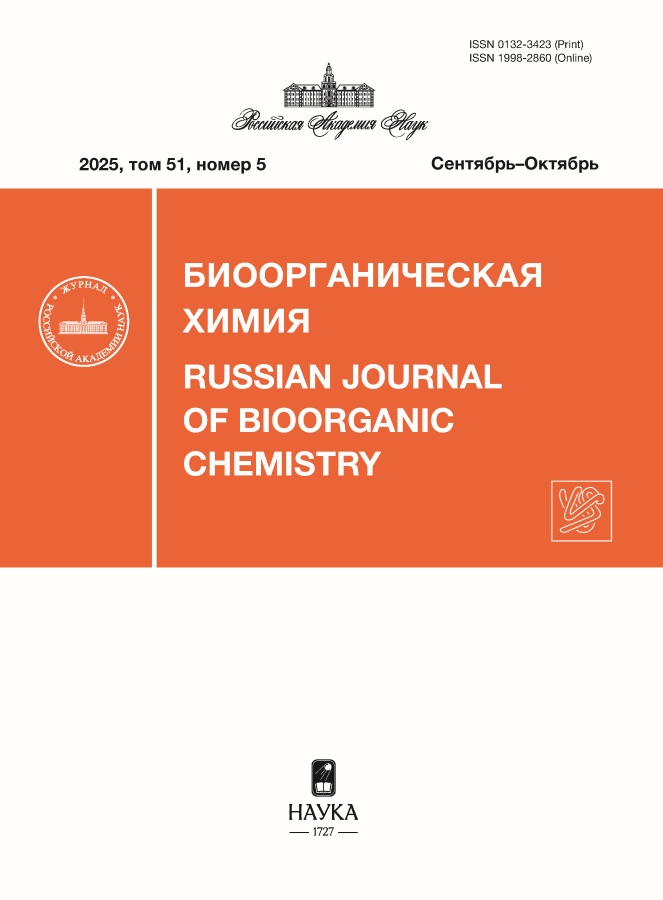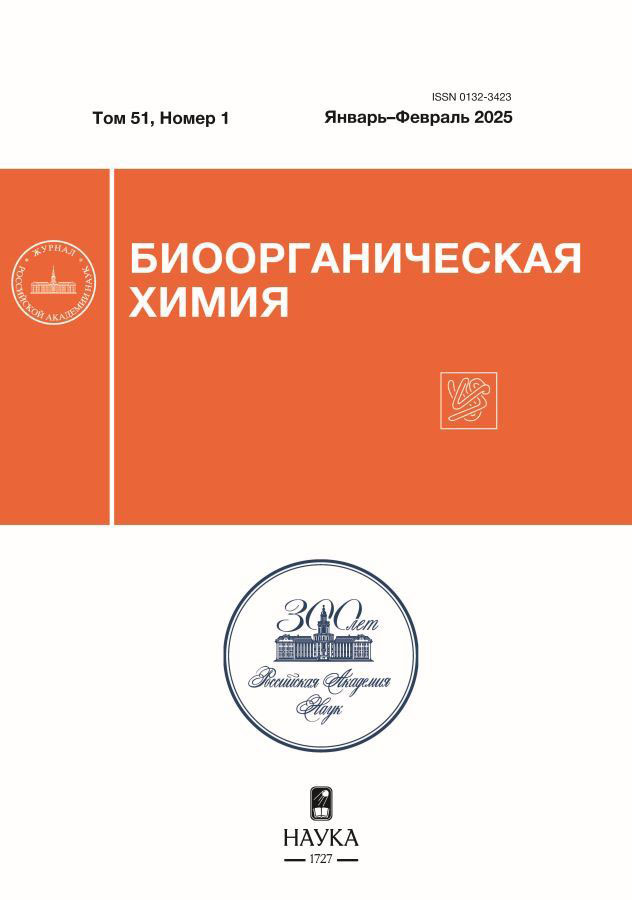Analysis of the content of membrane lipids of bivalve mytilid mollusks and strongylocentrotid sea urchins with different life spans
- Authors: Drozdov A.L.1, Sikorskaya T.V.1, Grigorchuk V.P.1
-
Affiliations:
- Zhirmunskii National Science Center of Marine Biology, Far East Branch, Russian Academy of Sciences
- Issue: Vol 51, No 1 (2025)
- Pages: 94-104
- Section: Articles
- URL: https://rjmseer.com/0132-3423/article/view/683100
- DOI: https://doi.org/10.31857/S0132342325010093
- EDN: https://elibrary.ru/LZBHYJ
- ID: 683100
Cite item
Abstract
In order to understand whether the lipid composition of the plasma membrane is related to life expectancy, in this work we conducted a comparative study of the profiles of molecular species of four main classes of plasma membrane phospholipids (phosphatidylcholines (PC), phosphatidylethanolamines (PE), phosphatidylserines (PS) and phosphatidylinositols (PI)) for the long-lived mussel Crenomytilus grayanus and the long-lived sea urchin Mesocentrotus nudus and the short-lived mussel Mytilus trossulus and the sea urchin Strongylocentrotus intermedius. Molecular profiles of these membrane lipids were determined using high-performance liquid chromatography in combination with high-resolution mass spectrometry. In this work it was shown that the profile of PI molecular species is not related to the lifespan of mussels and hedgehogs, in contrast to the profile of PC, PE, and PS molecular species. Sea urchins M. nudus and mussel C. grayanus with a longer lifespan were characterized by an increased content of PC, PE and PS with odd numbered alkyl/acyl chains and molecular species with arachidonic acid (20:4n-6), a higher content of which can contribute to a better adaptation of the mussel of C. grayanus and the sea urchin M. nudus and thus contribute to a longer lifespan. The lipidomic approach to studying the gerontological problem using sea urchin and bivalves as an example has shown a clear relationship between the profile of molecular types of membrane lipids and lifespan. The exact mechanisms of this need to be clarified further.
Full Text
About the authors
A. L. Drozdov
Zhirmunskii National Science Center of Marine Biology, Far East Branch, Russian Academy of Sciences
Author for correspondence.
Email: anatoliyld@mail.ru
Russian Federation, Vladivostok
T. V. Sikorskaya
Zhirmunskii National Science Center of Marine Biology, Far East Branch, Russian Academy of Sciences
Email: anatoliyld@mail.ru
Russian Federation, Vladivostok
V. P. Grigorchuk
Zhirmunskii National Science Center of Marine Biology, Far East Branch, Russian Academy of Sciences
Email: anatoliyld@mail.ru
Russian Federation, Vladivostok
References
- Анисимов В.Н. // Молекулярные и физиологические механизмы старения. Санкт-Петербург: Наука, 2008. Т. 1. 481 с.
- Чаплинская Е.В., Бутвиловский В.Э. // Старение: теории и генетические аспекты: учеб.-метод. пособие. Минск: БГМУ, 2014. 74 с.
- Голубев А. Г. Естественная история продолжительности жизни и старения. СПб.: Эко-Вектор, 2022. 551 с.
- Москалёв А.А. // Старение и гены. М.: Наука, 2008. 372 с.
- Москалёв А.А. // Успехи геронтологии. 2009. Т. 22. № 1. С. 92–103.
- Хэйфлик Л. // Как и почему мы стареем? М.: Вече АСТ, 1999. 432 с.
- Хансон К. П. // Успехи геронтологии. 1999. № 3. С. 103–110.
- Фролькис В.В. // Старение и увеличение продолжительности жизни. Л.: Наука, 1988. 239 с.
- Фролькис В.В. // Физиол. журн. 1990. № 5. С. 3–11.
- Фролькис В.В., Мурадян Х.К. // Старение, эволюция и продление жизни. Киев: Наукова думка, 1992. 336 с.
- Дильман В.М. // Четыре модели медицины. Л.: Медицина, 1987. 288 с.
- Pamplona R., Portero-Otin M., Riba D. // J. Lipid. Res. 1998. V. 39. P. 1989–1994.
- Barja G. // Free Radic. Biol. Med. 2002. V. 33. P. 1167– 1172.
- Pamplona R., Barja G., Portero-Otin M. // Ann. N.Y. Acad. Sci. 2002. V. 959. P. 475–490.
- Agaba M.K., Tocher D.R., Zheng X., Dickson C.A., Dick J.R., Teale A.J. // Comp. Biochem. Physiol. B Biochem. Mol. Biol. 2005. V. 142. P. 342–352. https://doi.org/10.1016/j.cbpb.2005.08.005
- Hulbert A.J., Else P.L. // J. Theor. Biol. 1999. V. 199. P. 257–274.
- Hulbert A.J., Pamplona R., Buffenstein R., Buttemer W.A. // Physiol. Rev. 2007. V. 87. P. 1175–1213. https://doi.org/10.1152/physrev.00047.2006
- Munro D., Blier P.U. // Aging Cell. 2012. V. 11. P. 845– 855.
- Pamplona R., Prat J., Cadenas S., Rojas C., PérezCampo R., López Torres M., Barja G. // Mech. Ageing. Dev. 1996. V. 86. P. 53– 66. https://doi.org/10.1016/0047-6374(95)01673-2
- Bodnar A.G. // Exp. Gerontol. 2009. V. 44. P. 477–484.
- Schöne B.R., Oschmann W., Rössler J., Freyre Castro A.D., Houk S.D., Kröncke I., Dreyer W., Janssen R., Rumohr H., Dunca E. // Geology. 2003. V. 31. P. 1237–1240.
- Schöne B.R., Fiebig J., Pfeiffer M., Gleß R., Hickson J., Johnson A.L.A., Dreyer W., Oschmann W. // Palaeogeography, Palaeoclimatology, Palaeoecology. 2005. V. 228. P. 130–148.
- Butler P.G., Wanamaker A.D., Scourse J.D., Richardson Ch.A., Reynolds D.J. // Palaeogeography, Palaeoclimatology, Palaeoecology. 2013. V. 373. P. 141– 151.
- Золотарев В.Н. // Склерохронология морских двустворчатых моллюсков. Киев: Наукова думка, 1989. 112 с.
- Bodnar A.G., Coffman J.A. // Aging Cell. 2016. V. 15. P. 778–787.
- Ebert T.A. // Longevity, Life History, and Relative Body Wall Size in Sea Urchins // Ecol. Monogr. 1982. V. 52. P. 353–394.
- Ebert T.A., Southon J.R. // Fishery Bulletin. 2003. V. 101. P. 915–922.
- Ebert T.A. // Exp. Gerontol. 2008. V. 43. P. 734–738.
- Ebert T.A., Russell M.P. // Mar. Biol. 1993. V. 117. P. 79–89.
- Sergiev P.V., Artemov A.A., Egor B. Prokhortchouk E.B., Dontsova O.A., Berezkin G.V. // Aging. 2016. V. 8. P. 261–271.
- Vinnikova V.V., Drozdov A.L. // Biol. Bulletin. 2011. V. 38. P. 861–867. https://doi.org/10.1134/S1062359011090093
- Kober K.M., Bernardi G. // BMC Evol. Biol. 2013. V. 13. P. 1–4. http://www.biomedcentral.com/1471-2148/13/88
- Folch J., Lees M., Sloane-Stanley G.A. // J. Biol. Chem. 1957. V. 226. P. 497–509.
- Imbs A.B., Dang L.P.T., Rybin V.G., Svetashev V.I. // Lipids. 2015. V. 50. P. 575–589.
- Sikorskaya T.V., Ermolenko E.V., Efimova K.V. // Coral Reefs. 2022. V. 41. P. 277–291.
- Shikov A., Laakso I., Pozharitskaya O.N., Makarov V.G., Hiltunen R. // Planta Medica. 2012. V. 78. P. 1146–1164.
- Shikov A., Laakso I., Pozharitskaya O., Seppänen-Laakso T., Krishtopina A., Makarova M., Vuorela H., Makarov V. // Mar Drugs. 2017. V. 15. P. 365–376. https://doi.org/10.3390/md15120365
- Istomina A.A., Zhukovskaya A.F., Mazeika A.N., Barsova E.A., Chelomin V.P., Mazur M.A., Elovskaya O.A., Mazur A.A., Dovzhenko N.V., Fedorets Y.V., Karpenko A.A. // Biology (Basel). 2023. V. 12. P. 1–13. https://doi.org/10.3390/biology12060837
- Хавинсон В.Х., Линькова Н.С. // Физиология человека. 2012. Т. 38. С. 119–127.
- Скулачев В.П. // Экономич. стратегии. 2016. № 1. С. 36–39.
- Скулачев В.П., Скулачев М.В., Фенюк Б.А. // Жизнь без старости (электронное издание). М.: МГУ им. М.В. Ломоносова, 2014. 345 с.
- Kaneda T. // Microbiol. Rev. 1991. V. 55. P. 288–302.
- Welch D.F. // Clin. Microbiol. Rev. 1991. V. 4. P. 422–438.
- Haubert D., Haggblom M.M., Langel R., Scheu S., Ruess L. // Soil Biol. Biochem. 2006. V. 38. P. 2004–2007.
- Řezanka T., Sigler K. // Prog. Lipid Res. 2009. V. 48. P. 206 –238.
- Beasley D. // Am. J. Physiol. 1999. V. 276. P. 1369–1378.
- Maskrey B.H., Megson I.L., Whitfield P.D., Rossi A.G. // Arterioscler. Thromb. Vasc. Biol. 2011. V. 31. P. 1001– 1006.
- Rett B.S., Whelan J. // Nutr. Metab. (Lond.). 2011. V. 8. P. 36–51. https://doi.org/10.1186/1743-7075-8-36.
- Norambuena F., Morais S., Emery J.A., Turchini G.M. // PLoS One. 2015. V. 10. P. e0143622. https://doi.org/10.1371/journal.pone.0143622
Supplementary files












